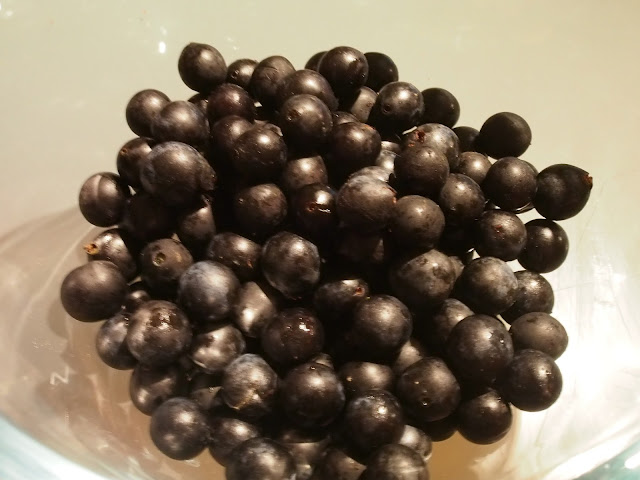After several attempts since 2014, I finally reach the pinnacle of pickling - I got the Blue Ribbon at the Sydney Royal Easter Show pickling competition (Vinegar pickles - class 413)!
The vinegar pickles category requires competitors to submit two different pickles. My first pickle was a pickled pineapple. The second was pickled fennel and beetroot. It's been around 8 months since the Easter Show but I've finally got a bit of time to share the winning recipe!
I'd noticed in several previous Easter Shows, the winning entries had one pickled vegetable and one pickled fruit. So if I was serious about getting the Blue Ribbon, and in the absence of a clear judging criteria, I decided to follow suit.
I came up with the idea to submit pickled pineapple after reading about Al Pastor tacos which has grilled pineapple on it. I thought a pickled pineapple would go great on a pork taco, or with anything pork-related. The spices and herbs included were Asian inspired to compliment the pineapple. The red radishes transfer their colour into the pickle brine and give the pickle a nice orange/pink hue.
I thought I'd also add a Filipino twist to the recipe by using coconut vinegar for the brine. Coconut vinegar is available in most Asian grocery shops, particularly Filipino shops.
Pickled Pineapple Recipe
Ingredients
- A ripe pineapple, skin and core removed, cut into bite sized pieces.
- A bunch of radishes (the red ones), sliced thinly with a mandolin.
- Jalapeños (as many as you want), sliced thinly with a mandolin.
- A thumb sized pice of galangal, sliced thinly.
- A thumb sized piece of ginger, sliced thinly.
- Coconut vinegar, 1 cup.
- Rice Vinegar, 1 cup.
- Sake or rice wine, 1/2 cup.
- Water, 1.5 cups.
- 5 lime leaves (kaffir lime).
- Sugar, 4 tablespoons (or more if you like a sweeter pickle).
- Salt.
Making the pickle
- One you've cut the pineapple into small, bite sized pieces, place it into a bowl with the radishes and jalapenos, cover them in about 3 tablespoons of salt, and make sure each piece is salted. The salt will draw out some moisture from the fruit and vegetables.
- Into a saucepan, add the coconut vinegar, rice vinegar, sake, water, lime leaves, ginger, galangal, sugar and 1 tablespoon of salt. Bring to the boil, ensuring all the sugar and salt are dissolved.
- Once some additional moisture has been removed from the pineapple and vegetables (about 2 hours), discard the extracted salty juice.
- Place the pineapple, radishes and jalapeños into jars. Add a lime leaf, some ginger and galangal slices into each jar.
- Once each jar is filled, cover the jarred ingredients with the brine.
- The pineapple will last a month if you don't can the jars.
- If you want to can the jars, then boil the jars, ensuring the jars are submerged in boiling water, for 10 minutes.















































